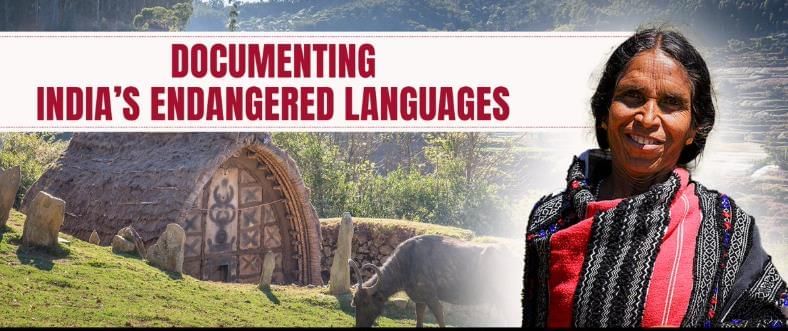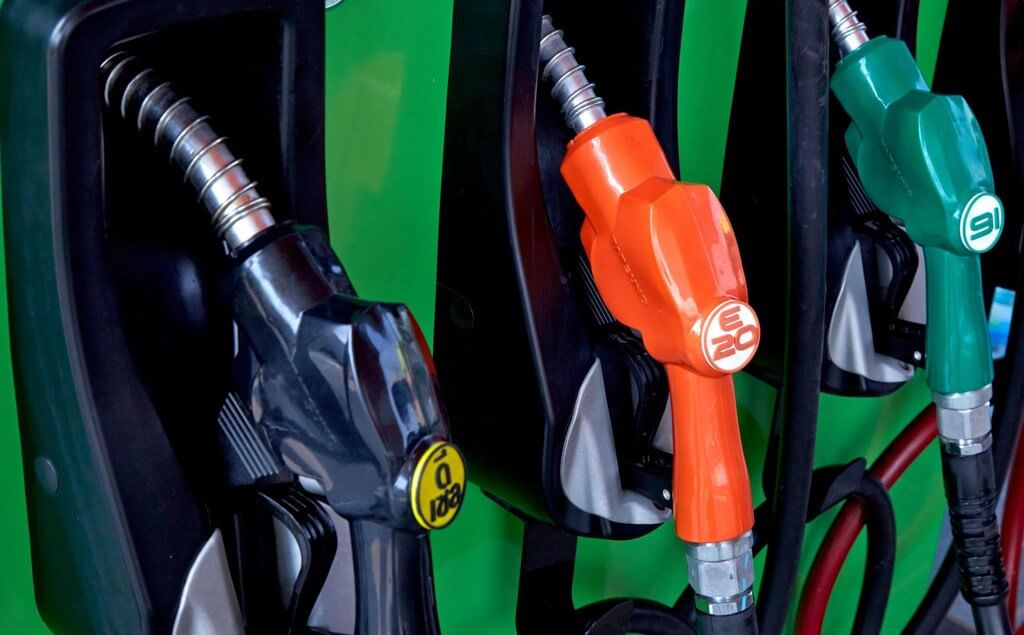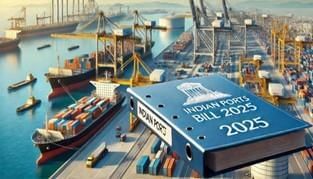PIB Summary - 13th August 2025 | PIB (Press Information Bureau) Summary - UPSC PDF Download
Documenting India’s Endangered Languages

Context and Importance of Endangered Languages
- India has a vast linguistic diversity, with 2,843 mother tongues recorded in the 2011 Census.
- Languages with fewer than 10,000 speakers are considered endangered, and currently, 117 such languages have been identified by SPPEL.
- Endangered languages are crucial as they carry not just words, but also culture, oral traditions, ecological knowledge, rituals, and the identity of communities.
- For example, the Toda language in the Nilgiri Hills is vital for the Toda tribe's connection to their sacred landscape and ancestral knowledge.
Historical Background
- The first systematic survey of India’s languages was conducted by George Abraham Grierson between 1894 and 1928, documenting 179 languages and 544 dialects across British India.
- This survey laid the foundation for understanding India’s linguistic diversity.
- Subsequent censuses expanded the mapping of languages, with the 1961 Census recording 1,652 mother tongues and the 2011 Census recording 2,843 mother tongues, of which 1,369 were recognized and 1,474 were unclassified.
- SPPEL builds upon this historical foundation to preserve languages that are under-documented or critically endangered.
Endangered Language Preservation in India
SPPEL is a scheme implemented by the Central Institute of Indian Languages (CIIL) under the Ministry of Education. Its objectives include documenting the grammar, vocabulary, and oral traditions of endangered languages, creating audio-visual archives, pictorial glossaries, and bi-/tri-lingual dictionaries, digitally archiving materials for worldwide access, and producing primers and educational material to promote early literacy in tribal languages.
Currently, 117 endangered languages have been documented, with a target to document around 500 lesser-known languages.
Other government initiatives include the National Education Policy 2020, which promotes multilingual studies and the three-language formula, and the Ministry of Tribal Affairs, which is funding AI-based language preservation through the TRI-ECE scheme.
The Ministry of Culture and allied organizations are also promoting tribal arts, oral traditions, manuscripts, festivals, and literature festivals to support endangered languages.
Global Perspective
- UNESCO estimates that around 50% of the 7,000 global languages are endangered.
- The period from 2022 to 2032 has been declared the International Decade of Indigenous Languages to raise awareness and promote the preservation of indigenous languages.
- The International Day of the World’s Indigenous Peoples on August 9 highlights the rights, culture, and preservation of indigenous peoples and their languages.
AI and Indigenous Knowledge
- AI can both pose risks and offer opportunities for indigenous knowledge.
- Risks include the potential exploitation of indigenous knowledge without consent and the perpetuation of colonial patterns.
- Opportunities include language revitalization, translation tools, and ecological conservation.
- Examples of positive AI use include Polynesian communities using AI for reef conservation and Māori language revitalization in New Zealand.
- In India, the TRI-ECE scheme is developing AI translation tools for tribal languages, such as Bhashini, BITS Pilani, and IITs.
Linguistic Diversity in India
By Zone
- Northern: 25 languages (e.g., Spiti, Jad, Gahri)
- Northeast: 43 languages (e.g., Aimol, Tangam, Sherdukpen)
- East-Central: 15 languages (e.g., Bhunjia, Bondo, Toto)
- West-Central:. languages (e.g., Nihali, Baradi, Bhala)
- Southern: 20 languages (e.g., Toda, Soliga, JenuKurumba)
- Andaman & Nicobar:. languages (e.g., Sentinelese, Onge, Shompen)
By Language Family
- Indo-European: 24 languages; 76.89% population
- Dravidian: 17 languages; 20.82% population
- Austro-Asiatic: 14 languages; 1.11% population
- Tibeto-Burmese: 66 languages; 1% population
- Semito-Hamitic:. language; 0.01% population
Tribal Languages Distribution:
- Tibeto-Burman: North and Northeast India
- Austro-Asiatic: Central and East India
- Dravidian: South India
- Indo-European: Elsewhere in India
Multilingualism and Cultural Continuity
- India exhibits a high degree of multilingualism, with 89.59 crore monolinguals, 22.90 crore bilinguals, and 8.60 crore trilinguals according to the 2011 Census.
- Major languages include Hindi, Bengali, and Marathi, but endangered tribal languages face pressure from these dominant languages.
- Preservation efforts are essential to maintain endangered tribal languages, and SPPEL, along with the Ministry of Tribal Affairs, promotes trilingual and bilingual primers to help maintain heritage while enabling education in dominant languages.
Documentation Process (SPPEL Model)
- Recording Phase: Capture words, sentences, songs, and stories from native speakers.
- Transcription & Analysis: Convert oral data to written form and analyze grammar and phonetics.
- Grammar Construction: Document syntax and sentence formation systematically.
- Cultural Documentation: Record rituals, festivals, livelihood practices, and sacred traditions.
- Digital Archiving: Create metadata and digital repositories for global access.
- Revitalization: Develop community-driven primers and educational materials for children.
- Technological Support: Use high-end audio/video recording, linguistic software, and digital repositories like the Sanchika portal launched in July 2025.
Example of Cultural Documentation:
- “Panuha Not: The Pig Festival Chowra” from the Andaman & Nicobar Islands is an example of cultural documentation where the pig festival and its significance are recorded and preserved.
Challenges in Language Preservation
- Declining number of native speakers, especially among the elderly, leading to a loss of intergenerational transmission.
- Dominance of major languages in education and media reduces the use and transmission of endangered languages.
- Lack of native script for some languages, such as the Toda language, necessitating transliteration and the creation of primers in dominant languages.
- Resource constraints in remote and tribal areas hinder documentation and preservation efforts.
- Need for ethical AI deployment that respects consent and indigenous intellectual property rights in the use of indigenous knowledge.
Socio-Cultural Implications
- Loss of language equates to loss of oral history, rituals, ecological knowledge, and worldviews that are unique to each community.
- Preserving languages supports human rights, cultural identity, cognitive diversity, and sustainable practices that are rooted in indigenous knowledge.
- Language preservation strengthens intergenerational continuity, ensuring that modern education is engaged with while retaining cultural roots and practices.
- It fosters community engagement and participation in preservation efforts, strengthening social cohesion and identity.
Key Takeaways
- India has a rich but fragile linguistic ecosystem with a pressing need for protection and revitalization of endangered languages.
- SPPEL offers a structured and technology-driven framework for documenting and preserving endangered languages.
- AI can be a powerful tool for preservation but also poses risks of exploitation if not used ethically.
- Initiatives promoting multilingualism, documentation, cultural mapping, and literacy programs are crucial for sustainable language preservation.
- Global and national efforts are aligning to ensure that indigenous languages not only survive but thrive for future generations, contributing to cultural and linguistic diversity.
Response to Concerns on 20% Ethanol Blending in Petrol and Beyond

Context and Policy Background
- Ethanol Blending Programme (EBP):. national effort to mix ethanol with petrol to decrease reliance on crude oil and encourage cleaner fuels.
- India’s energy transition is in line with the Nationally Determined Contributions (NDCs) aimed at achieving net zero emissions by 2070.
- Biofuels and natural gas serve as transitional fuels that support climate and energy objectives without causing major disruptions.
- The goals of ethanol blending include:
- Lowering greenhouse gas (GHG) emissions.
- Enhancing energy security by cutting down on crude oil imports.
- Stimulating the rural economy and increasing farmers' incomes.
Environmental and Socio-Economic Benefits
GHG Emission Reduction:
- Sugarcane-based ethanol: Produces 65% fewer emissions compared to petrol.
- Maize-based ethanol: Results in 50% lower emissions than petrol, according to a study by NITI Aayog.
- CO₂ Reduction: The adoption of E-20 is expected to save around 736 lakh tonnes of CO₂, which is comparable to planting 30 crore trees.
Energy Security:
- Crude oil substitution: Approximately 245 lakh metric tonnes of crude oil have been substituted since 2014-15.
- Foreign exchange savings: Rs. 1,44,087 crore saved from 2014-15 to 2024-25.
- Expected savings: An estimated Rs. 43,000 crore in savings by 2025-26 with 20% blending.
Farmer Welfare:
- Increased earnings for farmers growing sugarcane and maize.
- Contributed to alleviating farmer distress and reducing suicide rates, notably in regions like Vidarbha.
- Farmers are becoming “Urjadaatas,” contributing to energy production, in addition to their traditional role as “Annadatas,” or food providers.
Technical Advantages of E-20
Fuel Performance:
- Higher octane rating: E-20 has an octane rating of approximately 108.5, compared to petrol's 84.4. This leads to better anti-knocking properties and improved acceleration.
- Higher heat of vaporization: E-20's higher heat of vaporization reduces the intake manifold temperature and increases the density of the air-fuel mixture, enhancing volumetric efficiency.
Pollution Reduction:
- Carbon emissions are reduced by about 30% when using E-20 compared to E-10.
Fuel Standards:
- The Research Octane Number (RON) of regular petrol has been increased from 88 to 91 under BS-VI standards, and further to 95 with the introduction of E-20.
Vehicle Compatibility:
- Many vehicles manufactured after 2009 are already compatible with E-20 fuel.
- Efficiency: There is minimal efficiency drop in vehicles designed for E-10, and negligible impact on E-20 compatible vehicles.
Addressing Concerns
Mileage and Performance:
- Mileage and performance are affected by various factors including driving habits, vehicle maintenance, tyre pressure, and air conditioning load.
- Claims about a “drastic efficiency drop” with E-20 are incorrect.
Vehicle Life:
- Older vehicles may require occasional replacement of rubber parts and gaskets when using E-20, but this is a routine and inexpensive part of vehicle servicing.
Insurance:
- Using E-20 fuel does not void vehicle insurance policies. Misinformation regarding this issue on social media has been clarified by insurers.
Price Concerns:
- The price of ethanol has increased over the years, with C-heavy molasses ethanol rising from Rs. 46.66 to Rs. 57.97 and maize ethanol from Rs. 52.92 to Rs. 71.86 between 2021-22 and 2024-25.
- Blended fuel pricing reflects these cost changes, and the program continues despite ethanol being more expensive than petrol.
Global Benchmarking
- Brazil: Has successfully used E27 fuel for many years without encountering significant issues.
- Vehicle Manufacturers: Companies like Toyota, Honda, and Hyundai produce vehicles that are compatible with both E-20 in India and similar standards in Brazil.
- Standards: The Bureau of Indian Standards (BIS) and Automotive Industry Standards ensure that vehicles meet the necessary criteria for drivability, startability, and compatibility of metal and plastic parts when using E-20 fuel.
Strategic and Policy Insights
Gradual Implementation:
- The roadmap for E-20 implementation was outlined in the 2021 Indian Motor Vehicle (IMC) report, allowing time for advancements in vehicle technology and supply chain adjustments.
- The government has committed to E-20 implementation until October 31, 2026.
Energy Transition Philosophy:
- There is a focus on not reverting to E-0 petrol to maintain the benefits gained in pollution reduction and energy security.
Integrated Stakeholder Engagement:
- Collaboration with various stakeholders including vehicle manufacturers, Oil Marketing Companies (OMCs), ethanol producers, and research and development agencies is crucial for a smooth transition to E-20 fuel.
Economic Impact
- Direct benefits to farmers through the procurement of ethanol for fuel blending.
- Reduction in foreign crude oil dependency leads to significant foreign exchange savings.
- Supports rural employment and ensures the viability of maize and sugarcane cultivation.
- Reinforces India’s energy self-reliance and promotes local value addition in the economy.
Communication and Public Perception
- The government actively works to counter misinformation regarding E-20 fuel use, particularly concerning efficiency, insurance, and cost issues.
- Social media fears are addressed through official clarifications and data-driven responses.
- Original Equipment Manufacturers (OEMs) engage with consumers to offer support for vehicle tuning or necessary parts replacement to ensure compatibility with E-20 fuel.
Summary: Key Takeaways
- E-20 fuel is considered safe, environmentally friendly, and economically beneficial.
- The initiative supports climate goals, enhances farmer incomes, and strengthens energy security.
- Concerns regarding performance and mileage are largely exaggerated; proper vehicle maintenance is key to ensuring longevity and efficiency.
- Global examples and vehicle manufacturing standards provide assurance of the technical feasibility of E-20 fuel use.
- The government is committed to a carefully planned implementation roadmap, prioritizing stakeholder engagement before advancing beyond E-20 fuel.
Indian Ports Bill, 2025 Passed: Modernising Maritime Governance for a Competitive and Sustainable Future

Overview & Salient Features
- Modernisation of Port Governance: The bill updates outdated rules from the Indian Ports Act of 1908 to meet present-day requirements.
- Ease of Doing Business (EODB): It simplifies port procedures and digitizes operations to make trade and logistics more efficient.
- Sustainability & Resilience: The bill incorporates green initiatives, pollution control measures, and disaster management protocols.
- Competitiveness & Investment: It establishes transparent tariff norms, improves investment frameworks, and encourages public-private partnerships (PPPs) and foreign investment.
- Logistics Efficiency: Aims to accelerate cargo movement, reduce logistics costs, and enhance connectivity, benefiting exporters and micro, small, and medium enterprises (MSMEs).
- Employment Generation: The bill is expected to create more jobs in port operations, logistics, warehousing, and related industries.
Institutional Mechanisms
Maritime State Development Council (MSDC):
- A body at the federal and state levels to align port development policies and strengthen cooperative federalism.
State Maritime Boards:
- These boards are empowered to manage non-major ports effectively, promoting decentralized governance.
Dispute Resolution Committees:
- Established for the quick resolution of conflicts among ports, service providers, and users.
Safety & Environmental Compliance
Waste Handling Facilities:
- Ports are required to have infrastructure for mandatory waste reception and processing.
Pollution Control:
- Aligned with international conventions like MARPOL and Ballast Water Management.
Emergency Preparedness:
- All ports must have plans for disaster and security readiness.
Renewable Energy & Shore Power:
- Promotion of eco-friendly practices, such as using shore power to reduce emissions.
Strategic Alignment
- The bill aligns with existing government initiatives like the Sagarmala Programme and Maritime India Vision 2030.
- It supports India’s goal of making ports engines of sustainable economic growth and global trade leadership by 2047.
Way Forward
- The Indian Ports Bill, 2025, represents a significant reform aimed at modernizing India’s maritime infrastructure and governance.
- With an emphasis on efficiency, sustainability, and competitiveness, the bill fosters the growth of MSMEs, regional development, and integration into global trade.
- Establishing institutions like the MSDC and State Maritime Boards ensures coordinated planning, while the focus on environmental and safety standards reflects a commitment to responsible development.
- Effective implementation, collaboration between governments, capacity building, and monitoring will be crucial for realizing the bill’s full potential.
FAQs on PIB Summary - 13th August 2025 - PIB (Press Information Bureau) Summary - UPSC
| 1. What are endangered languages, and why is it important to document them? |  |
| 2. What historical factors contribute to the endangerment of languages in India? |  |
| 3. How does the Indian government address concerns related to endangered languages? |  |
| 4. What is the significance of the Indian Ports Bill, and how does it relate to maritime governance? |  |
| 5. What are the implications of blending 20% ethanol in petrol for India? |  |
















